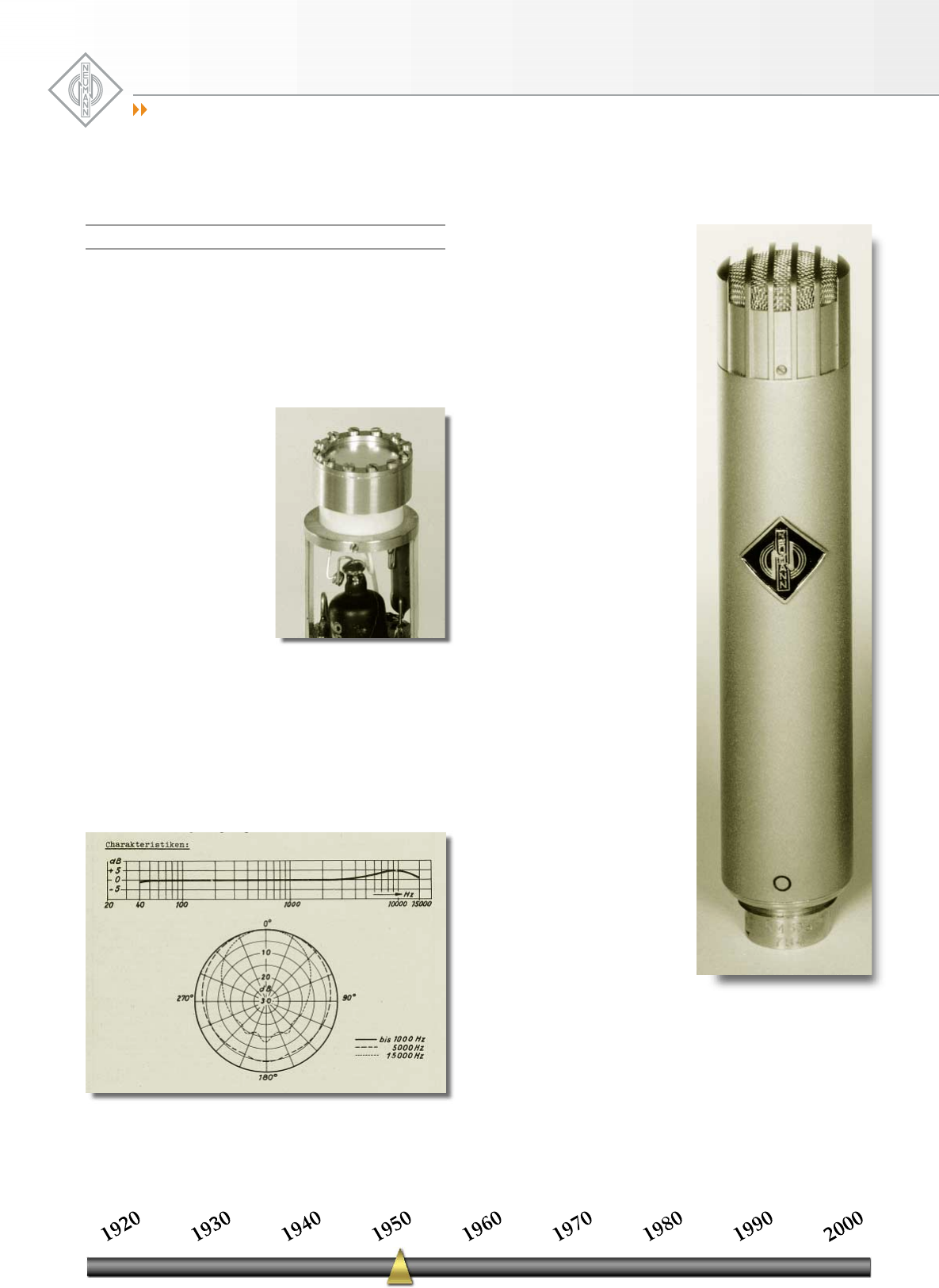
neumann.berlin
the microphone company
KM 53 – Miniature Microphone
The postwar years in Germany were shaped by reconstruc-
tion and new developments in every field. Progress was made
in virtually all aspects of studio technology, including radio
broadcasting. The introduction of frequency modulation dra-
matically improved the audio quality by expanding the trans-
mission bandwidth and largely eliminating system noise. This
new method allowed for the full audible range of sound to
be transmitted intact.
In recording technology the
shellac recording disk was re-
placed by the vinyl record,
moving pictures came to rely
more and more on magnetic
recording technology for
sound, and finally a new me-
dium took hold on the scene:
Television. This placed addi-
tional demands on devices
which now not only served to
capture sound, but in doing so
inevitably also became visible.
Of course, we are referring to
the microphones.
With regards to the electro-acoustical data, Neumann micro-
phones already fulfilled the needs of the evolving studio tech-
nology. Meeting high quality standards for this new medium
was easy to achieve but the size of the microphones present-
ed new challenges: the face of a performer would virtually
disappear behind the bulk of an M 49 or U 47. The audience
no longer wanted to just hear the artists, they ultimately want-
ed to see them as well! Neumann was thus faced with the
challenge of producing smaller microphones, which, while
maintaining their established technical parameters, could also
be integrated harmoniously into the television picture.
A practical solution was to
take one the smallest exist-
ing studio microphone cap-
sules and install it in the
smallest possible micro-
phone. The pressure capsule
that had been used so suc-
cessfully in the M 50 mi-
crophone (where it was in-
tegrated into a plastic
sphere) proved to be more
than a capable performer
when placed in a cylindri-
cal housing of 21 mm in
diameter. Thus a new om-
nidirectional microphone
made its world debut in
1953 as the KM 53, “KM”
standing for “Kleinmikro-
phon”, or “little micro-
phone”. The capsule, origi-
nally with a metal dia-
phragm, was more capable
of withstanding the intense
heat generated by the
bright stage lights of early
television than any synthet-
ic film based membranes.
For the standards of that
time, the miniaturization
was remarkable. A bro-
chure noted: “Despite the
dense concentration of
miniature components in
this microphone type, a
high degree of reliability is
achieved.” The tube chosen
for use in the KM 53 mini-
ature microphone was the
already proven AC 701 k
from Telefunken.
The microphone’s acoustic
characteristics were de-
scribed at the time as fol-
lows: “Because of this miniature microphone’s tiny meas-
urements, the small increase in directivity associated with a
desired slight rise in the frequency curve occurs in a free
sound field only at high frequencies”. The phenomenon is
clearly illustrated in the diagrams.
The KM 53 laid the foundation for a successful line of small
diameter microphones whose characteristics will be examined
in the course of this series.



